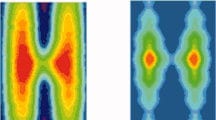Titanium dioxide has attracted great interest in chemical and physical sciences, partially due to its potential applications in catalysis; for example, as an efficient catalyst for the photo-dissociation of water. In particular, despite having a very interesting and complex behavior, TiO2 (110) is considered to be one of the most easily prepared and stable oxide surfaces, thus contributing to its popularity. Scanning tunneling microscopy (STM) is a prominent technique in use to study the morphology and reactivity of adsorbed species on the TiO2 surface; however, only the synergic application of STM and computer simulations can provide a complete picture of the catalytic process.
Now, a short perspective article by Prof. Jinlong Yang (University of Science and Technology of China ) looks at recent progress in such joint studies of scanning tunneling microscopy and density functional theory investigations on the electronic structure of reduced rutile TiO2(1 1 0) (1 x 1) surface and the adsorption and reaction of oxygen, carbon monoxide, carbon dioxide, methanol, and ethanol on this widely studied surface.
Coupled with STM images recorded at positive or negative bias, which give information on unoccupied and occupied surface states, respectively, DFT can be used to arrive at a holistic picture of the surface chemistry of the rutile surface. The authors have considered the interaction between five small molecules (oxygen, carbon mono- and di-oxides, methanol and ethanol) on a defective rutile surface, with oxygen vacancies or hydroxyl groups normally produced during the growth process, by sputtering and annealing.
The results obtained help shed light on the open question – whether excess electrons at the surface are localized or delocalized.This combined STM and DFT approach finds that excess electrons from point defects are delocalized. For instance, oxygen exposure can be adsorbed at a defect site either molecularly (low concentration) or dissociatively (high concentration). Open questions that remain to be answered include the quantification of the effect of interstitial Ti on surface chemistry and the adsorption of carbon dioxide. The details of the model used to describe the interaction are critical.
You can access this article and other new reviews and tutorials in quantum chemistry at the journal webpage at q-chem.org.


















